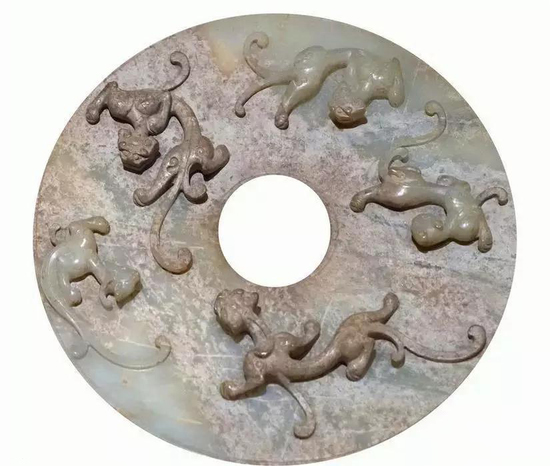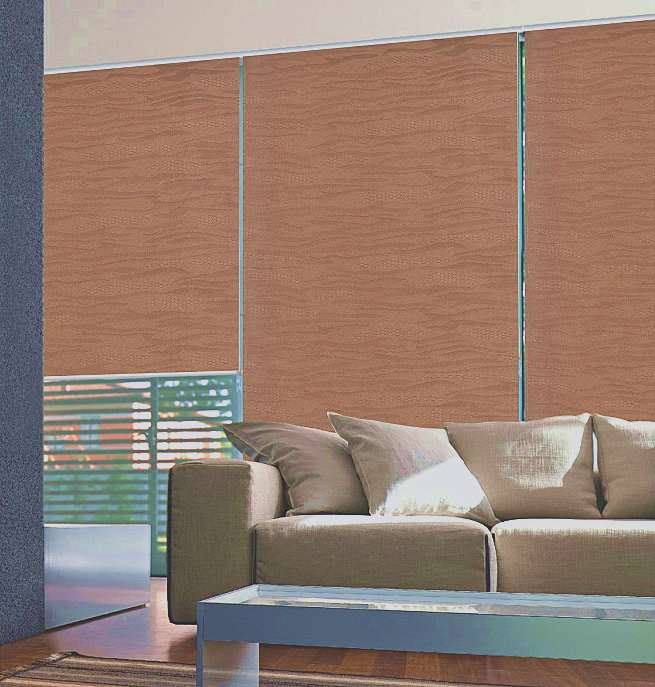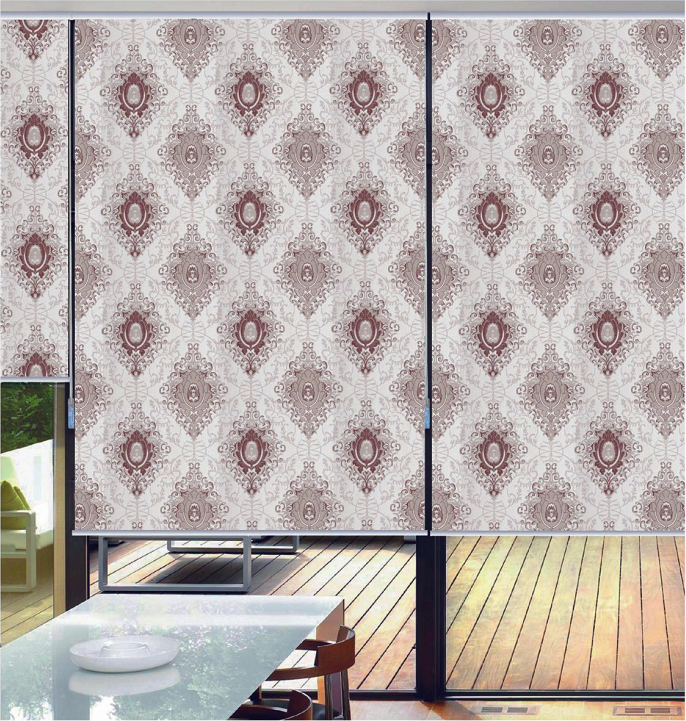In the jade culture of China, the dragon is an animal that has been mythological, and it can catch up with the five oceans in the next nine days. "Longsheng nine sons, each has a different", when they are displayed on the ornamentation, can you recognize it? In fact, in the jade culture, there are other mythical animals, some of which are very long like dragons. But it does have another name.

1, èŸ èž pattern (panchi)
The crepe pattern first appeared in the Shang and Zhou Dynasties. Folklore èŸ and èž are the sons of the dragon, èŸ ç›˜ 盘 盘 盘 盘 èž èž èž èž èž èž èž ã€‚ 。 。 。 。 。 。 The crepe on the ancient bronze ware, its body and legs are like dragons, and the face is like a beast. This pattern is one of the main patterns on the jade articles of the Spring and Autumn Warring States and the Han Dynasty.
During the Warring States period, the crepe was round and big nose, double-line eyebrows, cat ears, neck thick and curved, the legs were also curved, the claws were often upturned, the body was generally outlined with a Yin line, and the tail was skein-like. The engraved line.
In the Han Dynasty, the crepe pattern was vertical and internal, and the eyebrows were shallow. If it was looming, the outside of the eyelids fell slightly, and the nose bridge showed thin lines. The body did not change much compared with the Warring States period, but only two cirrus patterns appeared in the tail. The tail of the composition. In addition, the crepe sometimes has three legs.
During the Southern and Northern Dynasties, the eyelids of the crepe lines were slightly longer and curved, and there were many grooves on the sides of the mouth. Some were engraved with shallow and soft long angles, long angles on the head, some without horns, and short legs. There is only one front leg, so it is also three legs. Sometimes the front leg also protrudes a little as the fourth leg. The tail is thick and the cuffs in the tail are wider than before.
In the Tang Dynasty, the neck of the crepe was herringbone, the ridge had a sinuous line, and some of the joints of the big shin of the leg were engraved with a pattern resembling a moiré.
In the Song Dynasty, the biggest feature of crepe was that there was a wide Yinxian line under the nose, like a groove, which was not available in previous generations.
In the Yuan Dynasty, the head of the crepe was wide and high, and the eyebrows, eyes, nose, and mouth were concentrated under the entire face, occupying only one-third of the face, and the neck was low, and many places were covered by the hair.
In the Ming Dynasty, there were many changes in the crepe pattern. The head shape was shorter than that of the Yuan Dynasty. The eyebrows and eyes were mostly drawn from the center of the face. There were many eye shapes. The image had crawling, rising, volts, and hovering. It was magnificent and beautiful. The center of the body of the cockroach also highlights the sharp straight line.
In the Qing Dynasty, the crepe pattern was further developed, and there were patterns that were not available in previous periods.
2, 夔 dragon pattern (kui)
Judging from the records of ancient books, the image of the cockroach is generally a big head, a big mouth, no horns, a snake body, one leg, and two legs. For example, "Shan Hai Jing·Da Lao Dong Jing" records: "There are beasts, like a cow, and the body is hornless, one foot, and the water will be rainy and windy. Its light is like the sun and the moon, its sound is like thunder, its name is 曰夔. With its skin as a drum, it is the bone of the beast, and it sounds five hundred miles to the world." It can be seen that the dragonfly is a blue-black monster with no horns, only one leg, and a drum made of its skin. The sound can be heard five hundred miles away, and the volume of the dragonfly is not too small. It is a mountain monster, which people think is a kind of dragon, so it is also called dragon. The dragon dragon pattern is a dragon body and a short body. Whether it is a side carving or a foot, it is called a dragon dragon pattern, also referred to as a crepe pattern.
The dragon dragon pattern is one of the earliest dragon patterns. It first appeared on the jade articles of the Shang and Zhou Dynasties, but the lines on the jade are softer than those on the bronzes, and they are more combined with the human face. There are also double engravings. The lines on jade in China vary greatly. The Warring States and the Han Dynasty were the prosperous period of the diamond pattern, and gradually disappeared.
3, 饕餮 ( (taotie)
According to records, cockroaches are a kind of greedy animal. Originally the name of barbarians, it should be a totem of a nation. "Said the text" is interpreted as: "Gourney for money is blasphemy, gluttony is blasphemy." In addition, the legend Longsheng Nine Son, vigilance is also one, is a greedy evil beast. It can be said that the crepe pattern is a patterned monster animal face pattern, so it is also called "beast face pattern", which has a certain warning meaning, that is, people are dieting, not greedy. Most of the crepe lines are on the top of the Ding, and it is not uncommon to see it on the jade. Everything on the artifact sees a wicked animal face, only one face, and no chin, we call it crepe.
This pattern can often be seen on the jade articles from the late Neolithic period to the Shang and Zhou dynasties. It is generally used for caution. The animal face has different characteristics in each era, and its evolution is consistent with the evolution of the ornament on the bronze.
4, 虺 (hui) pattern
It is a kind of poisonous snake in the legend. Anyone who has a small snake on the jade is a crepe. A lot of entanglement is entangled, it is called crepe. "Interpretation of jade" 曰: "Small 曰虺, big python." Visible genus snakes. Most of the tentacles on the ancient jade carvings have no feet, some have carved one head, and some have carved two heads. In fact, ancient people painted snakes to paint dragons, some have enough, and some have no. The footless snake is a snake, and the foot snake is like a common four-legged snake. It is a lizard.
5, 虬 (qiu)
虬 虬 虬 虬 虬 虬 , , , , , , , , , , , , , , , , , , , , , , , , , , , , , , , , , , , , , , , The crepe is a dragon with no horns.
These magical animals are then expressed in geometric patterns, which add to the mysterious color of the children. Combined with the jade rituals, they play a role in the people and the heavens and the earth. The crepe pattern is also one of the commonly used patterns of ancient jade wares and decorations. If you compare them carefully, you will find that the crepe lines have many things in common with the crepe lines, crepe lines, enamel lines and other animal patterns. This can be said to be ancient dragons. The reflection of the diversity of the pattern. If you have any questions, please feel free to add.
Jacquard Roller Blind Curtains
This Jacquard Roller Blind Curtains are very popular all over the year. The Shade roller is a beautiful protective device, shading effect and privacy are very good, anti-ultraviolet, keep indoor air smooth.

Whats More ? The exquisite jacquard pattern is more layered and changeable, with smooth surface, silky luster, smooth and delicate, soft and breathable. If you also like jacquard curtains, just contact us. We are waiting for your inquiry.

Blackout Roller Blinds, Jacquard Roller Blinds, Jacquard Window Roller Curtains, Jacquard Dyed Roller Blind Curtain Shades
SHAOXING XIANHENG INTERNATIONAL LTD. , https://www.xhcurtain.com